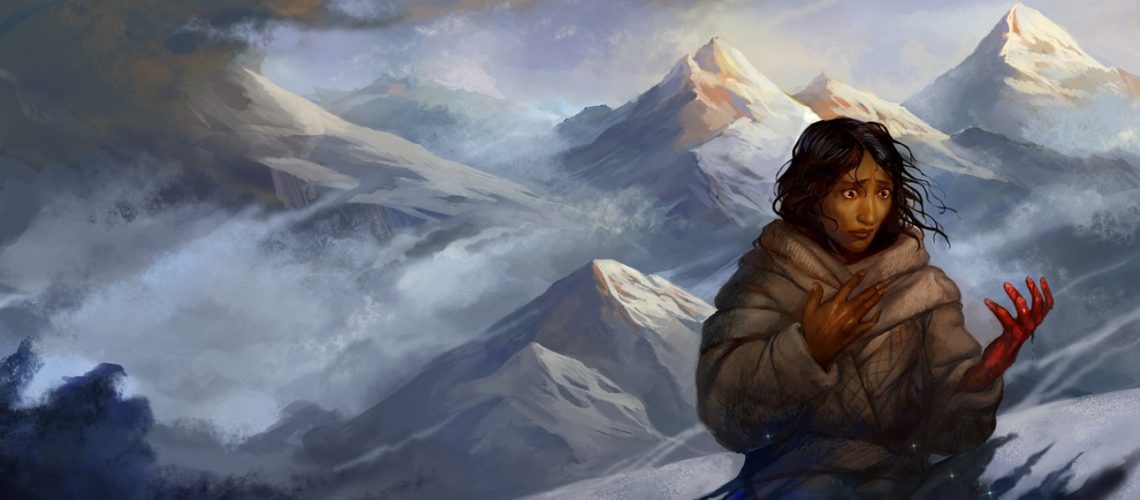An expedition to an alien planet goes horribly wrong, and the survivors try and find their way amongst a most alien culture in Windhome, by Kristin Landon. Forced quickly to survive with reduced numbers and a fear of what has occurred, the expedition’s goal to make contact with the locals and find evidence of aliens who have ravaged worlds, including the very world they have landed on, is the core of the plot.
The heart of the book, though, is the social and sociological relations the three human survivors have with the tall furred aliens who live on the cold and heavily glaciated planet. Windhome is very much in the grips of an ice age, with continental glaciers having marched as far as they have in our own world’s most recent glacial maximum. The author does an excellent job with designing an alien species, the Anokothu, living on such a world, especially one that has recently suffered devastation and loss that has only narrowed the margins of safety and surpluses needed for life. The author provides some twists to their biology that inform and help drive the narrative. This is an alien society that is more egalitarian in some ways, but in other ways the values of the aliens are orthogonal to those of human and human society. They may be humanoid and look in the vaguest sense like humans, but the author makes it clear that they are simply not humans with funny rubber masks. This is also true of other species on the world, which have analogues to Earth animals, but definitely are not. Their riding animals, for example, may be used in the way of horses, but they are dangerous carnivores, and have to be handled carefully.
But above and beyond the aliens as a species, it is the relations and personalities and personality conflicts that really drive the novel and propel a reader to continue the narrative. As fully fleshed out as their human counterparts, the aliens of the book come alive as they react to and have to deal with the sudden appearance of three people from the sky. This is not a good omen amongst them, for the last time people came from the sky, they wiped out the high civilization of the world and drove it back to barbarism. But it is the individual people, Dethun, head of the sisterhold, and her estranged son Kelru, especially, whose words, deeds, personalities and actions drive the novel. It is this relationship that the three human survivors Pierre, Anke and Vika are thrown into, give relief for, and ultimately change forever. Out of the three humans, Vika gets the most screen time as viewpoint and protagonist, and we do get to know her best. Her youthful naivete gets sorely tested on a harsh world with a harsh people. In many ways, the story of Windhome is the story of Vika learning, and growing, at what turn out to be very painful costs.
There are a couple of narrowly mentioned aspects of the worldbuilding that I really would have liked some more explication about. Something that really isn’t explored, but is crucial to the setting actually working as planned. In a couple of spots in the book, it’s stated that the forms of life on Windhome are DNA based just as on Earth. Although it’s not explicitly stated in the text, one has to assume that life on Windhome not only is DNA based, it must use D-Glucose just as we do. The explanation for this given is that Windhome is a “seeded world”. This is in fact not even the first seeded world. And that “all three worlds (including Earth) had been, not just seeded, but directed in much of its early history”. As someone who has a biology degree, however unused, the revelation that this universe has the assertion that Earth and other worlds were seeded and directed in their evolution had me jumping up and down. I wanted desperately to know more about all of this, since that is even more significant, to me, than the existence of the world-wiping out Destroyers. It seems here, though, really only as a convenience so that Vika and the rest of the crew would not die rapidly upon reaching Windhome because of basic incompatibility with the planet’s native life.
There is also a niggling plot question, which runs from the beginning through to the climactic confrontation toward the end of the novel, that doesn’t finally resolve. I am not quite sure if this is meant as a question to be explored in subsequent novels, or if it is a matter of a plot hole, but some of the setup of the premise seems to beg for an explanation beyond the convenience of the premise.
Despite these flaws for me, Windhome fits well in the more sociological end of the SF Space Opera spectrum. Although a comparison to Ursula K. LeGuin is obvious, I really think it’s Eleanor Arnason, with her Ring of Swords and A Woman of the Iron People, that Landon’s work most resembles in my reading oeuvre. It is a corner of Space Opera that is not quite as explored as it could be, and for me, Windhome is a welcome addition to it.









0 Responses